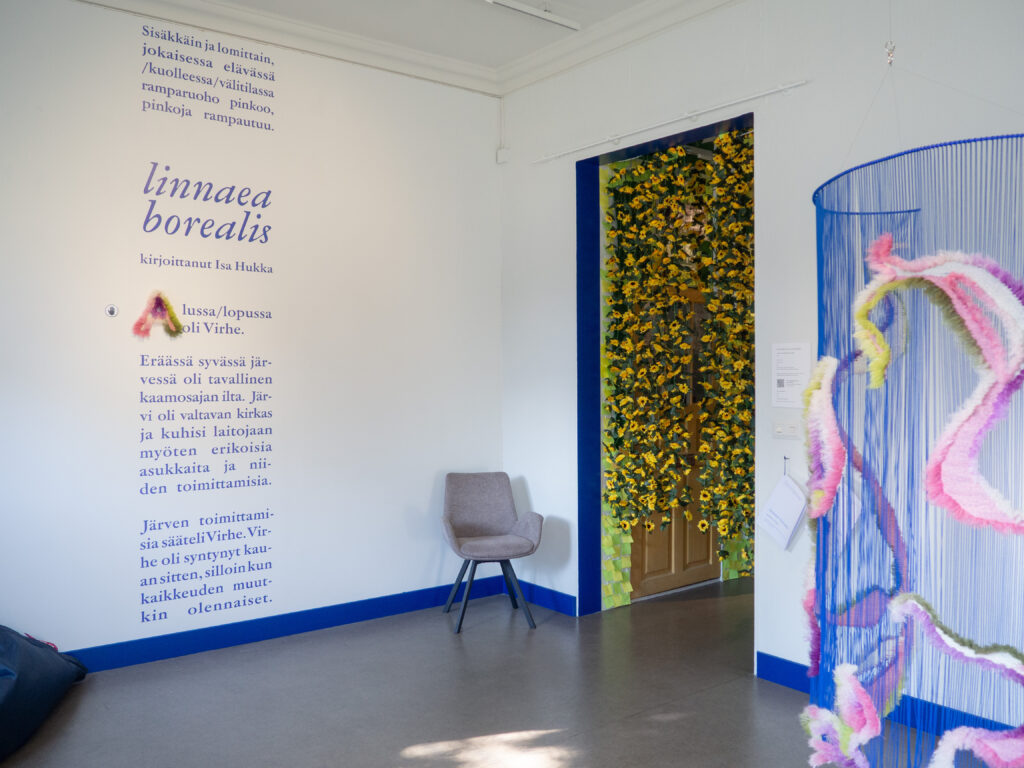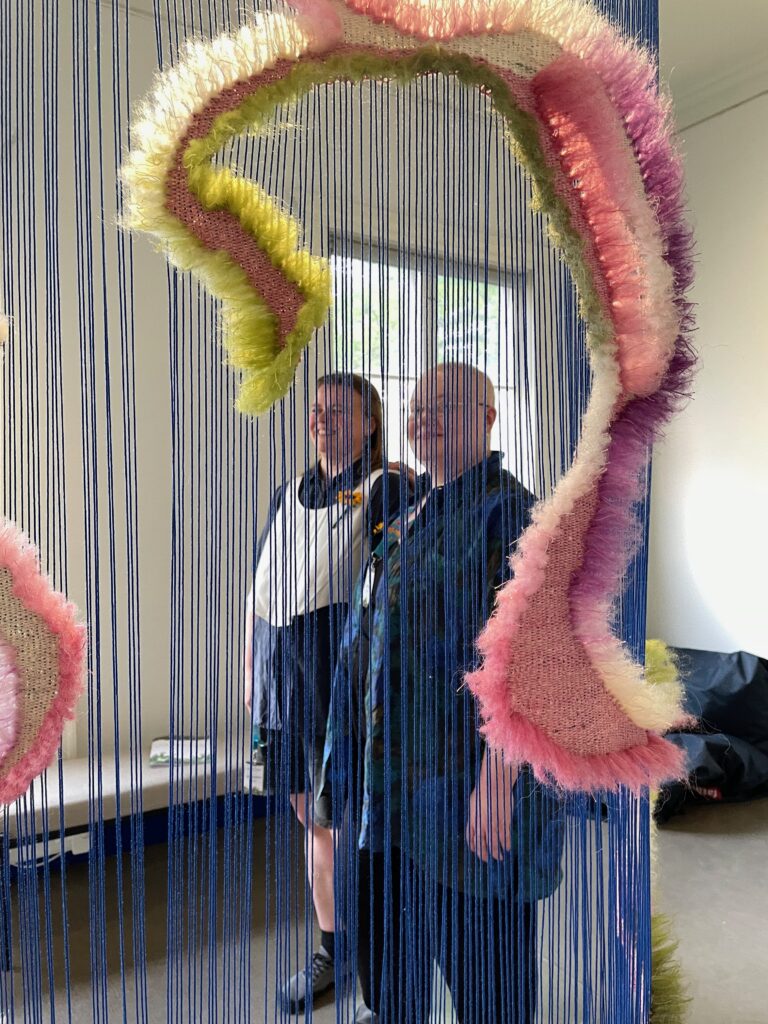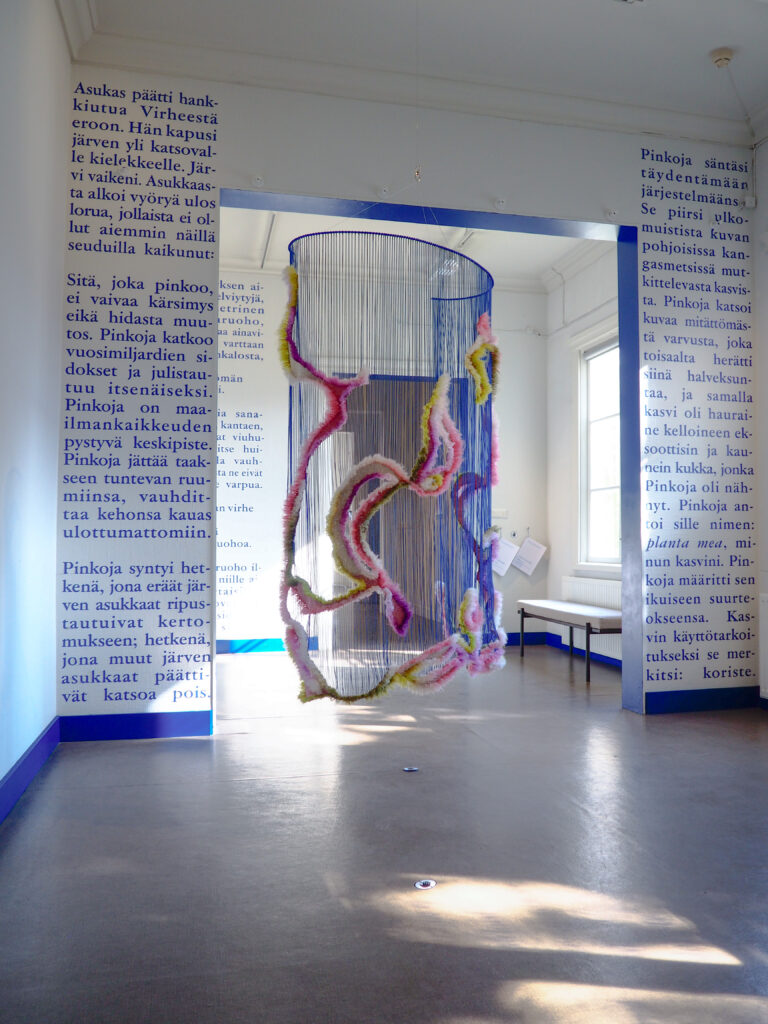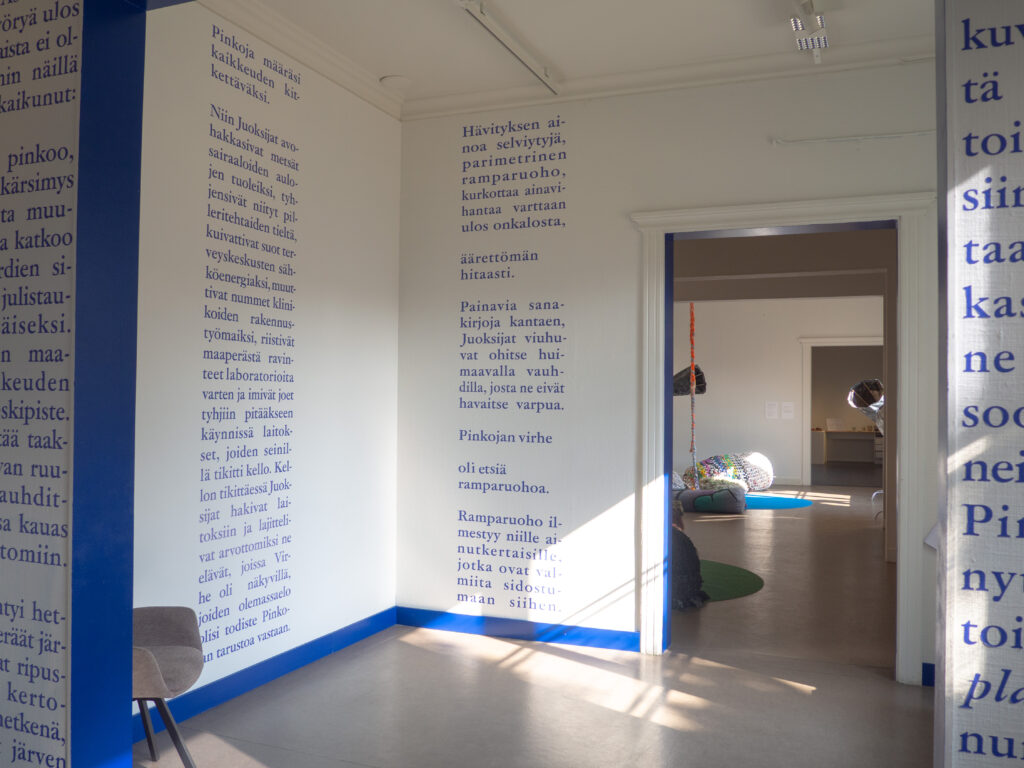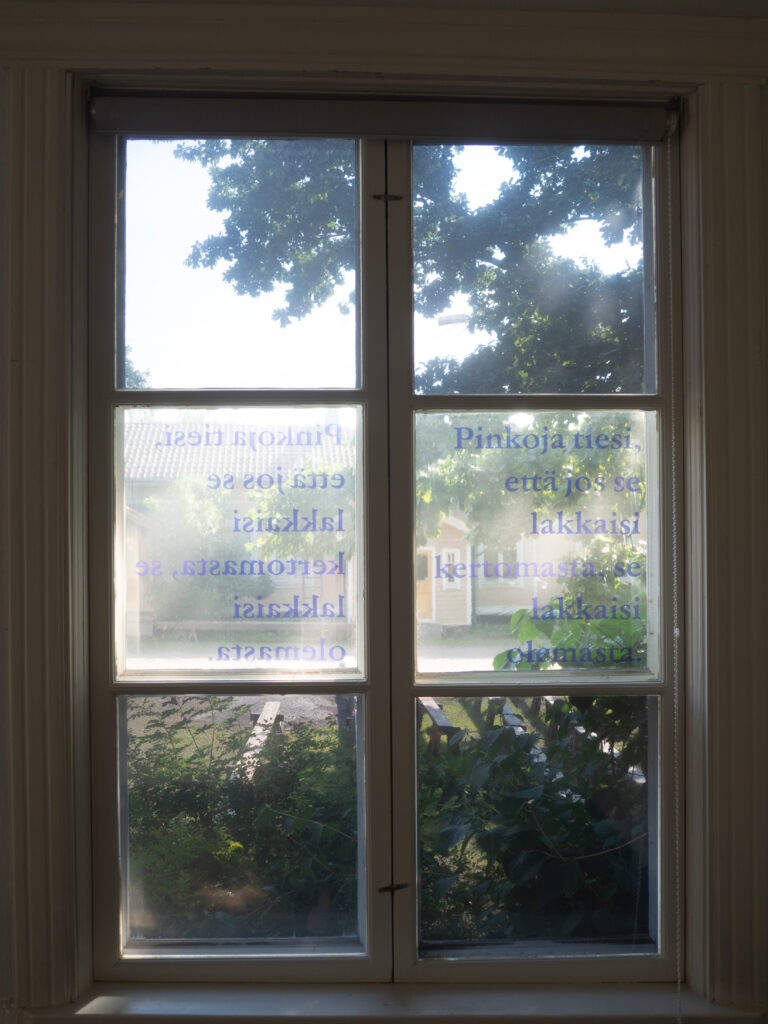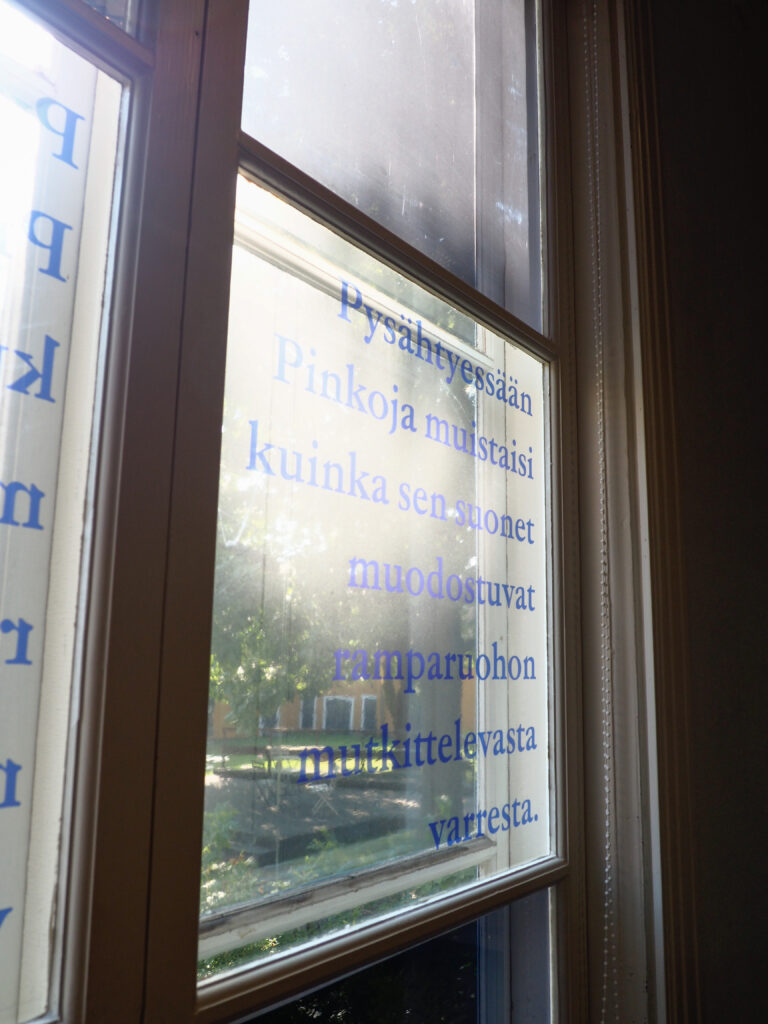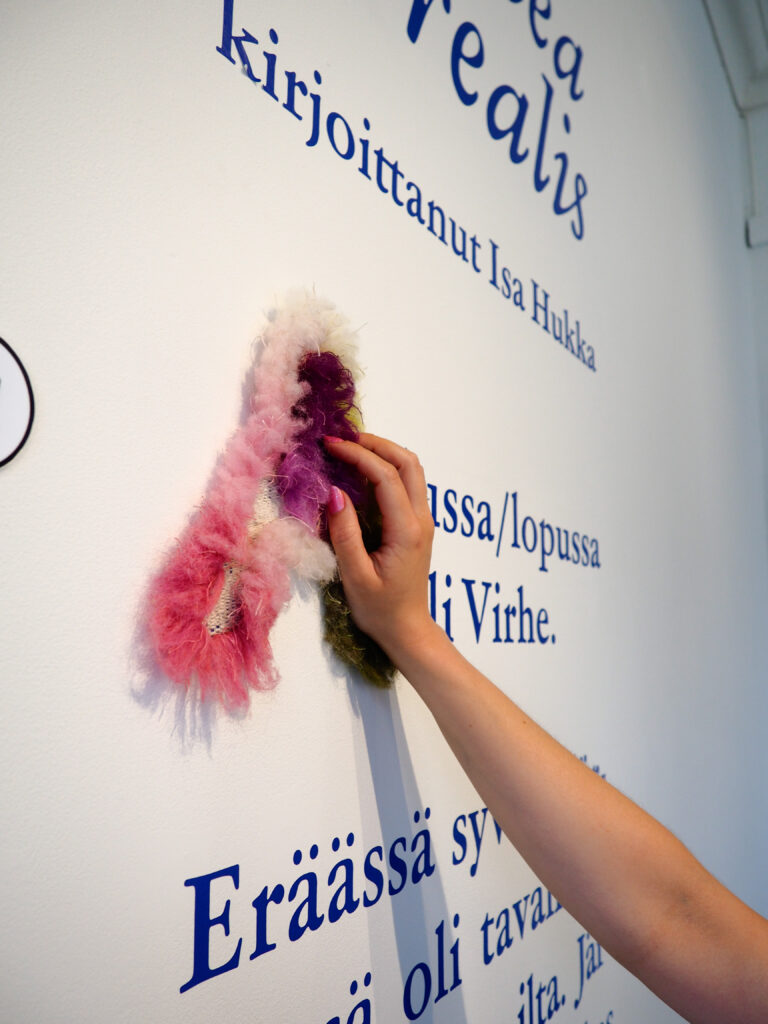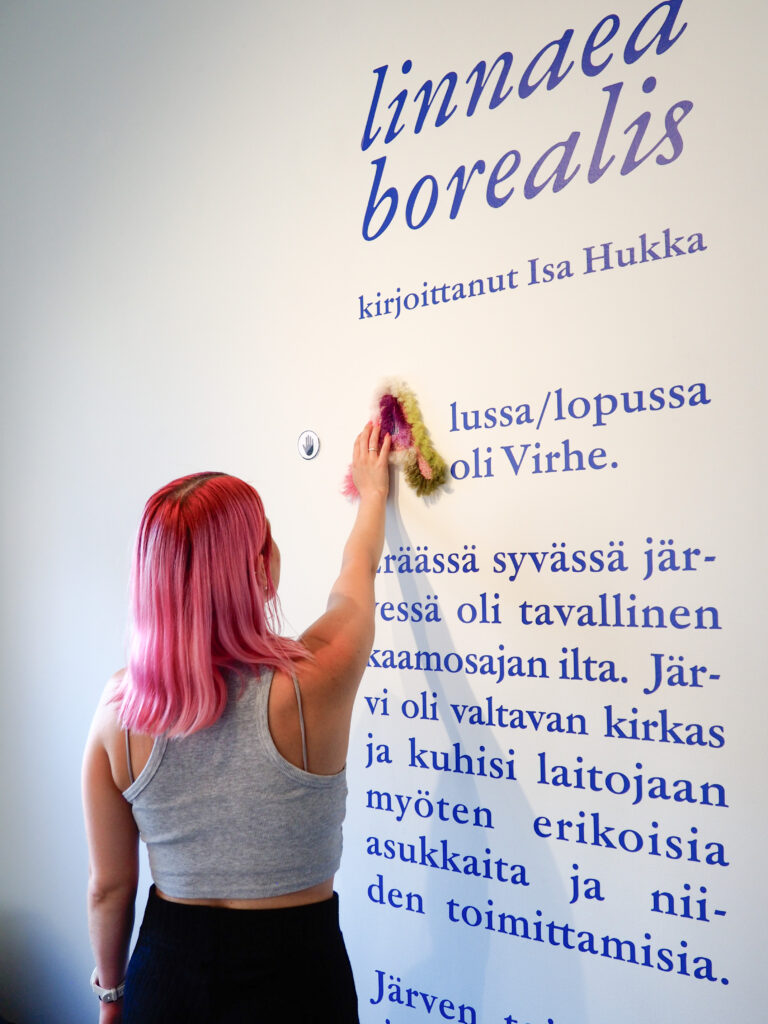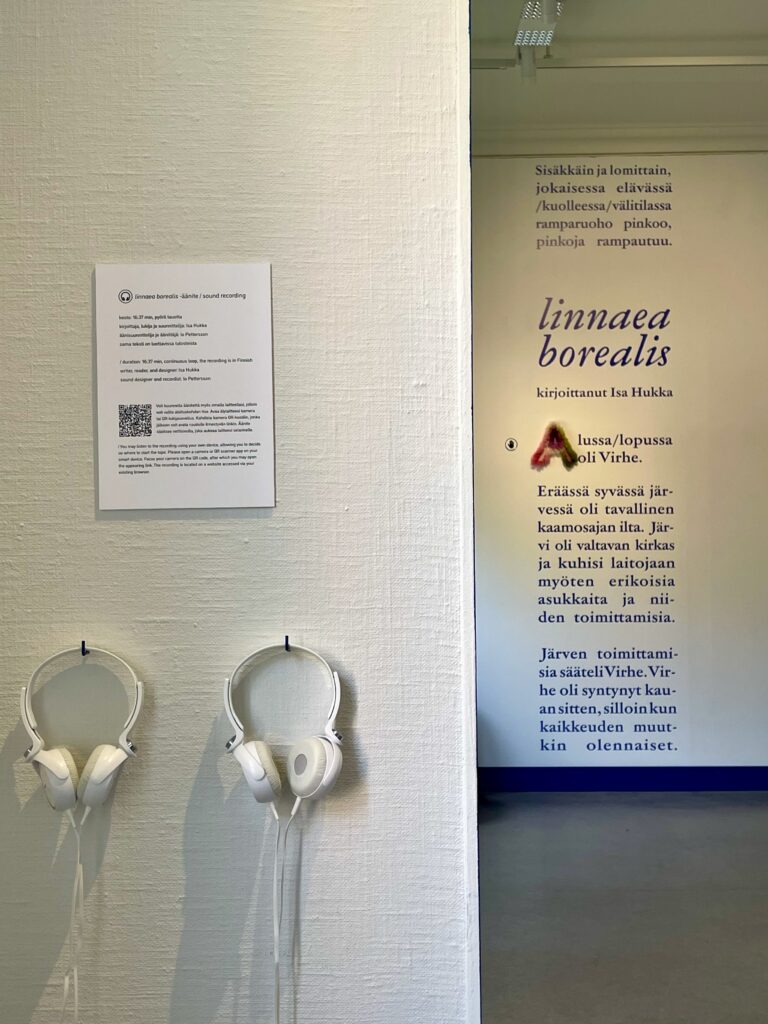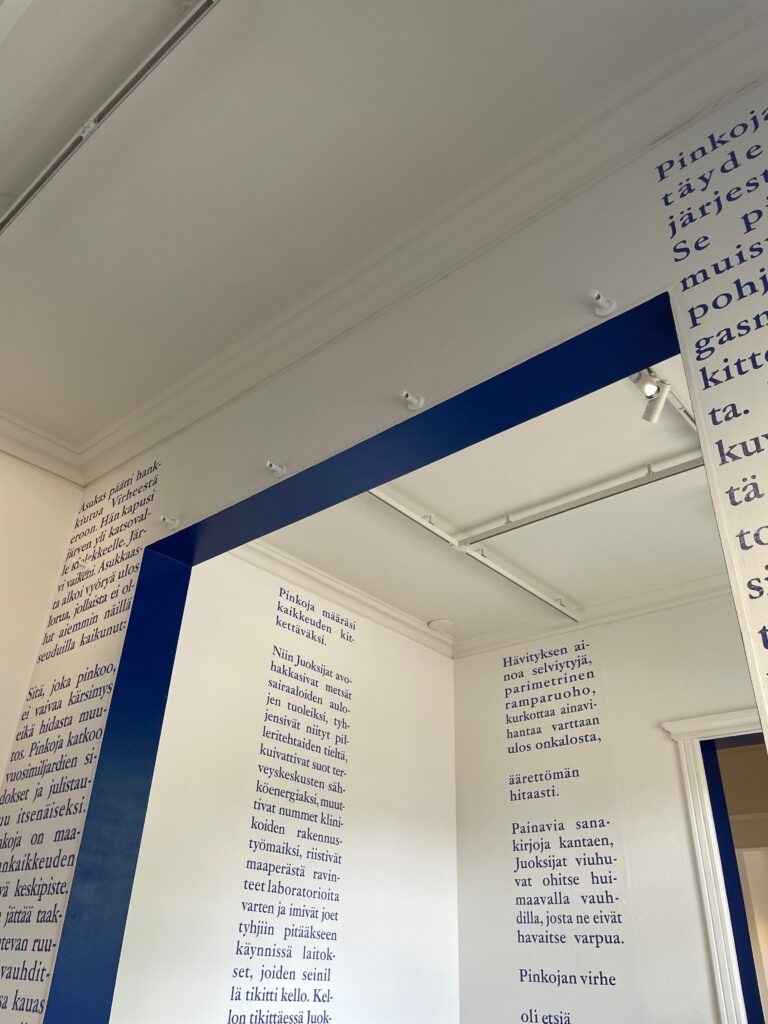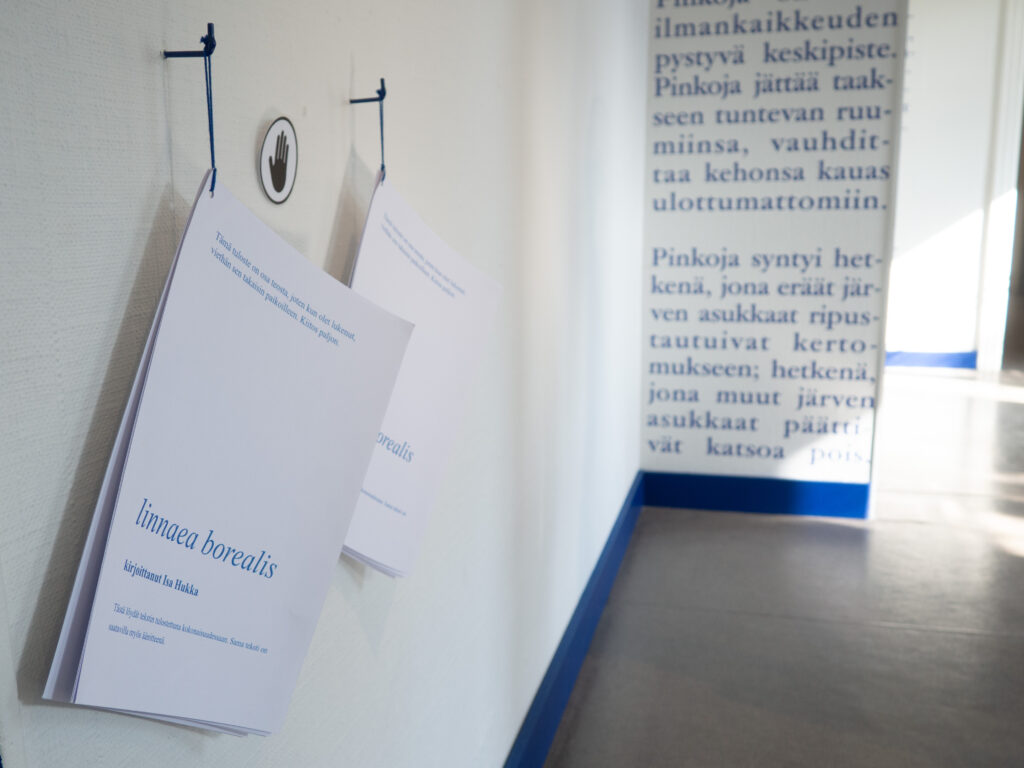You may read about the work in Finnish here.
linnaea borealis (2025)
Rauma Triennale 2025 international contemporary art exhibition, Rauma Art Museum.
Exhibition theme: Enchanting Effort. Curated by Sanna Karimäki-Nuutinen.
Teoksen lähtökohta
Linnaea borealis is my text-based piece, focusing on the study of local crip writing and accessibility as a form of textual diversity.
In this work, I discuss both real and fictional history of the plant ramparuoho (‘crip grass‘), which is one of the Finnish names for the plant known as twin flower. I explore ramparuoho as a mythological creature, and ask: what forms can accessibility take as an aesthetic?
Execution
The work was presented in three formats:
- As a text installation on walls and windows (lettering tape).
- As an audio recording (16 min 37 s), which could be listened by the museum’s headphones or via a QR code.
- As a printout that could be read in the exhibition space.
Part of a collaboration
My work was part of a dialogue between two works on crip art with visual artist Hele Okkonen. Questions on twin flower brought us together: how to describe and name ramparuoho? And what does the plant tell us? What does it tell about ourselves?
- My textual and typographical piece brought down myths about disability using the ramp writing methods I developed, approaching access through multimedial art.
- Okkonen’s kinetic rya piece featured a dialogue between the slow, repetitive rya-making practice and the sprawling strands of ramparuoho.
- Together, we built a shared exhibition space where text and textile art engaged in dialogue and told the story of rampic grass.
Credits
- Sound design and recording: Io Pettersson
- Text installation layout: Susanna Liikala
- Photographs: Rauma Art Museum (unless otherwise stated)
Documentation
